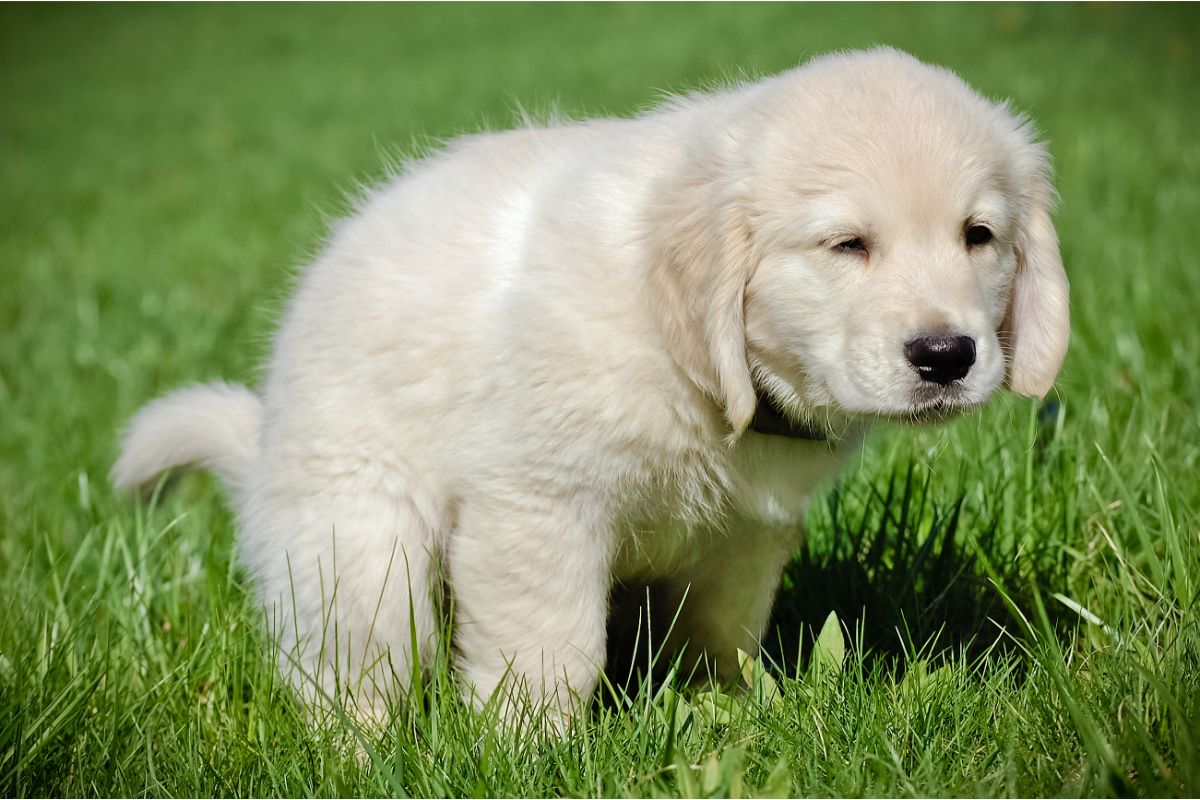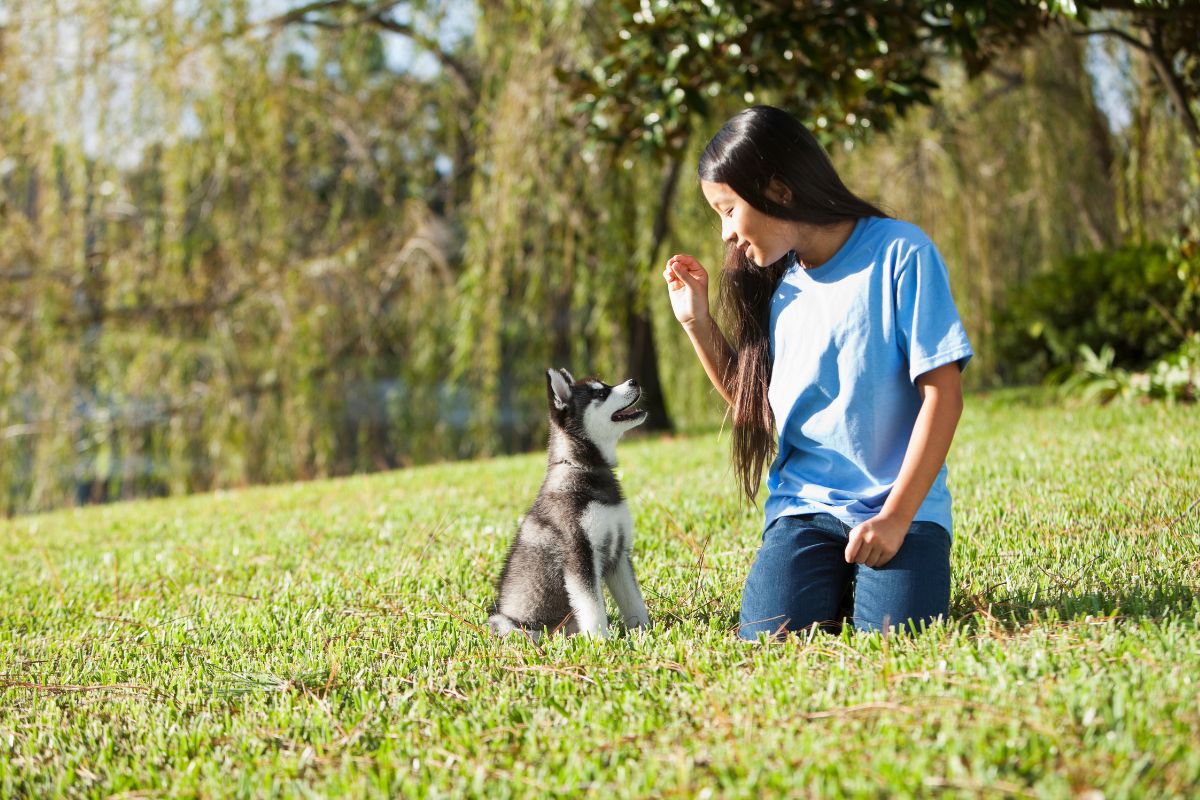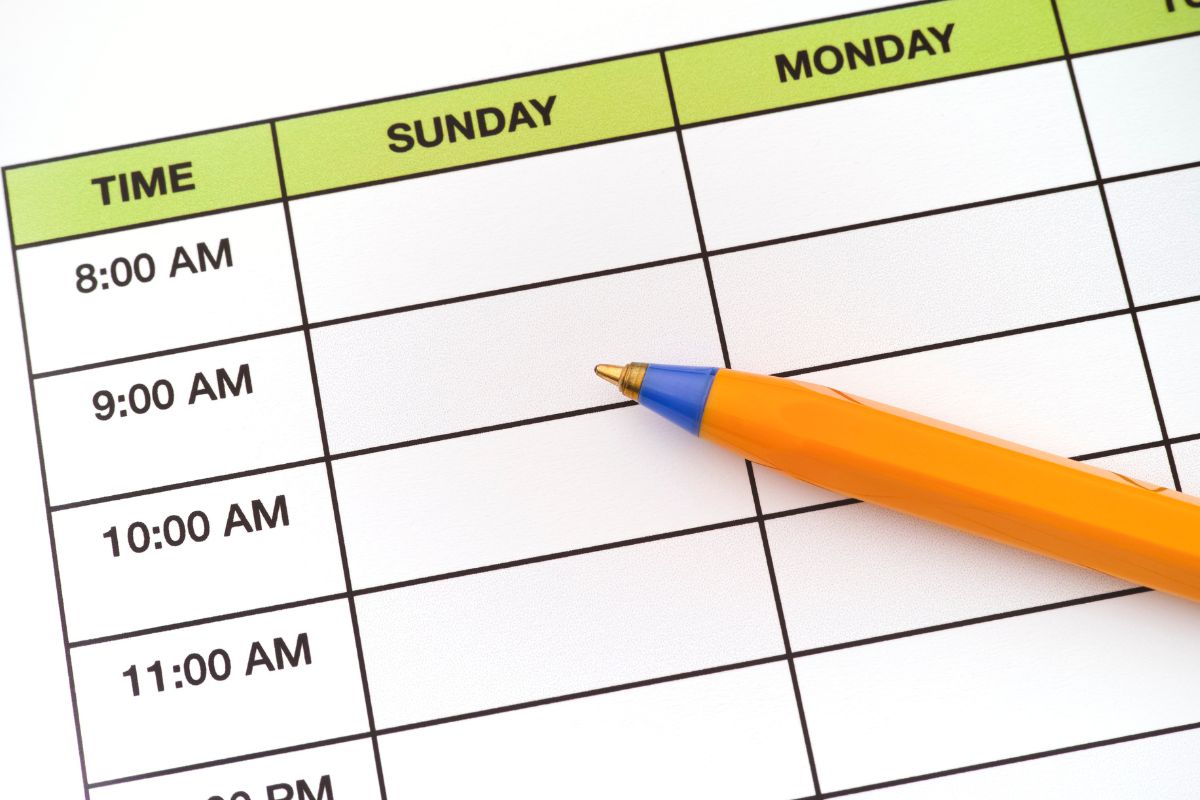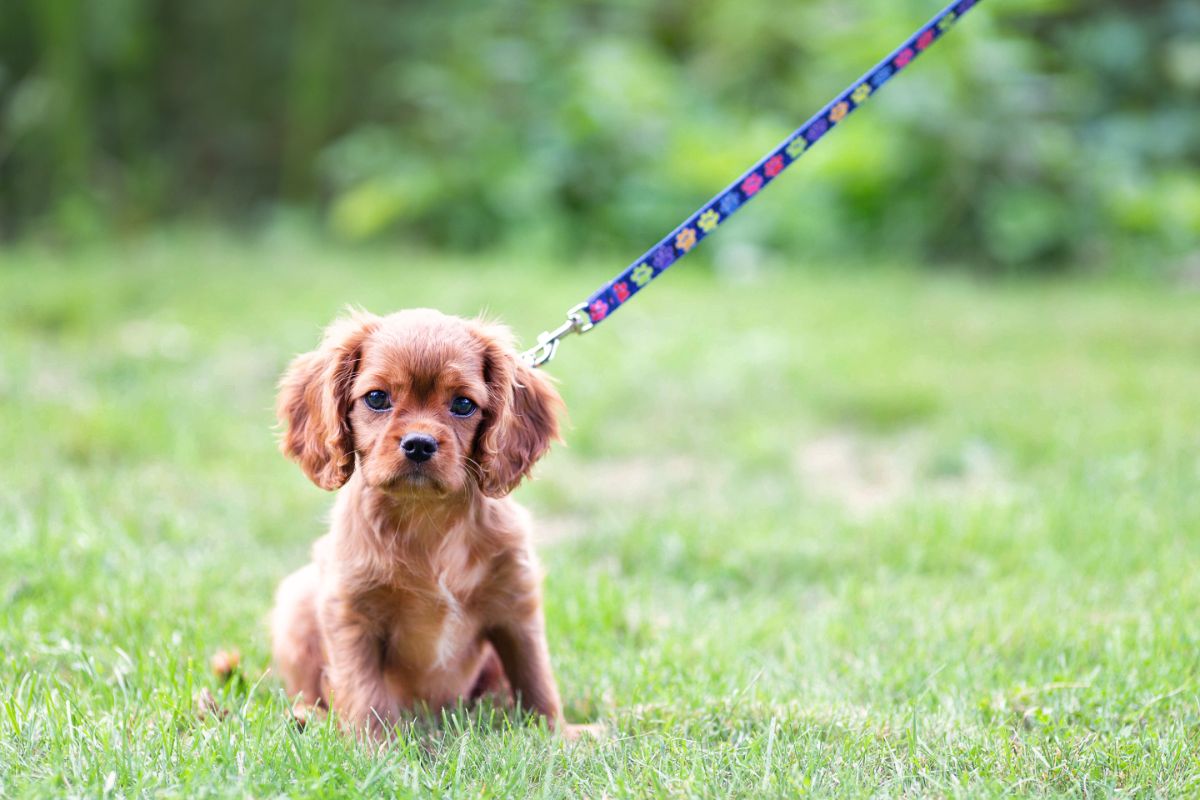You’ve decided to get a puppy! You’ve done your research, found the perfect puppy pal, and now you’re just waiting to get them home. But before you can start getting to know your new furry friend, you need to prepare for their arrival.
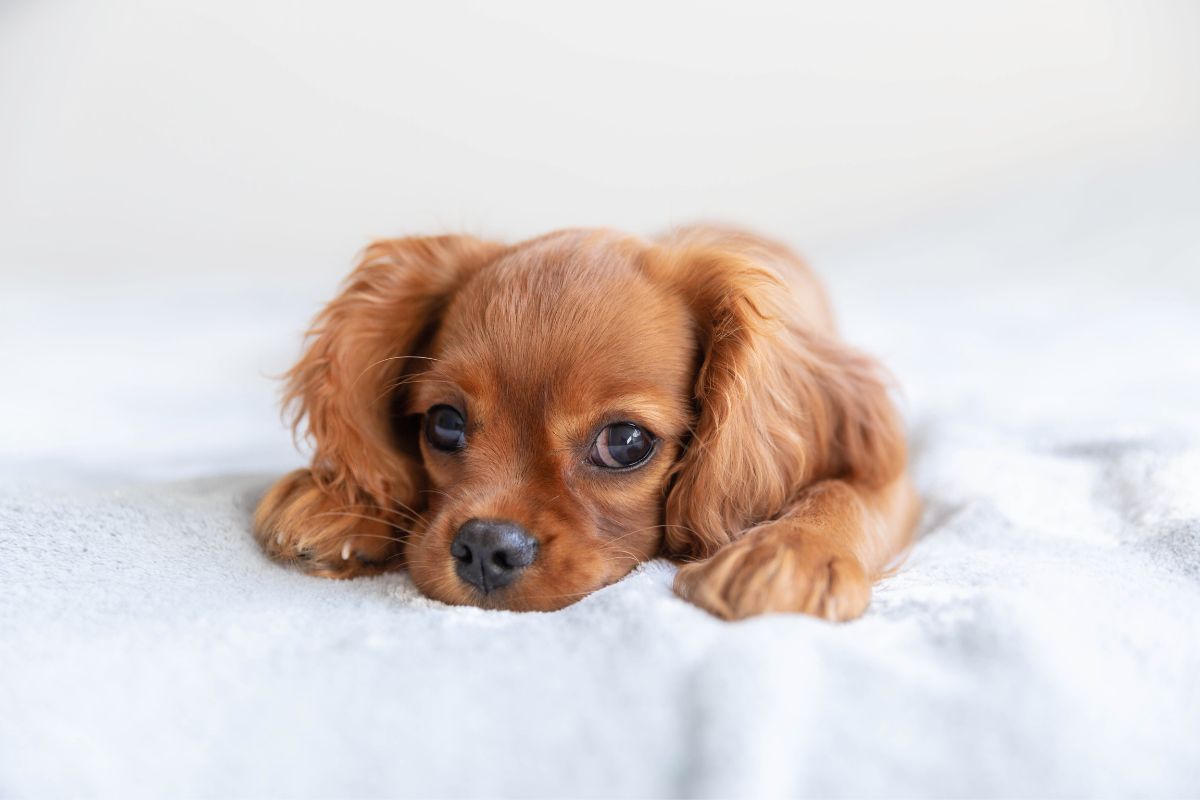
The responsibilities of being a puppy parent start before you get the new puppy through the door.
Your home needs to be ready for the new addition. That means dangerous items need to be put away, all the essentials are purchased, and everyone understands what caring for a puppy entails.
It’s a lot to do! But it’s worth it to make those first few weeks with your puppy as comfortable as possible. In this guide, we’ll take a look at the essential steps to prepare your home for a new puppy.
Step One: Get Puppy-Proofing
You’ve probably already pictured what it’s going to be like to have a new puppy in your home. You’ve imagined them curling up next to you on the couch or greeting you in the kitchen with a tail wagging a mile a minute.
As well as making your home a welcoming place for your new pup, you need it to be a safe space.
Puppies have an endless curiosity, a poor understanding of the word “no”, and an ability to get into everything. For their safety, you have to get puppy-proofing!
Puppy-proofing is like baby-proofing. You find the things that are likely to cause your pup harm and either remove them or make them safe.
Before you begin puppy-proofing, take a walk around your home and imagine it from the dog’s perspective. What looks in the way? What could be dangerous? Are there open cabinets they can get to?
Puppy-proof the home as best you can before your new dog arrives. You can then make any necessary adjustments as they get settled into the house. Some important things to puppy-proof are:
Trash And Old Food
You understand why trash is no good for a dog, but to a curious puppy, it can seem like a world of wonders! Left alone with a trash can, your puppy is likely to want to get in and explore.
But while it might seem like harmless (if frustrating) fun, eating old food can have serious health implications for your puppy. Human food can upset a dog’s stomach, especially that of a young puppy.
Make sure all your trash bins have a lid that keeps them closed. Check throughout the house — any bins in the bathroom or bedroom should be covered as well.
If you have the space, place kitchen bins in a separate room or outside. Alternatively, use child safety locks to keep the top closed!
Any food should be moved out of the reach of the dog or placed in locked cabinets.
Cleaning Supplies
Before you bring your puppy home, check the cleaning products you own to see if they’re safe to use around dogs. If they aren’t, switch to a pet-friendly alternative.
Any cleaning supplies should be placed in a high place or a locked cabinet. Ingesting cleaning supplies can cause serious medical issues for a dog.
Medicine
Any medicine should be kept in a high cabinet or a cabinet with a lock. If your puppy does ingest any medicine or cleaning supplies, contact the ASPCA Pet Poison Hotline or a similar service.
This goes not just for human medicines but also for any medications your dog might need. Just because it’s safe in limited amounts doesn’t mean they should have unrestricted access.
Before you bring a puppy home, print off a list of information hotlines and numbers to call in an emergency. That way, if something bad does happen, you can react quickly.
Electrical Cables
Often left lying on the ground, electrical cables are hard for a new puppy to resist. They’re in perfect reach of curious mouths and are easy to chew on during the teething phase.
Electrical cables can cause all sorts of problems for a puppy. They can cause electrical burns to the mouth and even result in injuries to the heart, lungs, and tissue. If the cable coating splinters, it can cause a blockage in the dog’s intestine.
In the worst-case scenario, a dog could be killed by chewing on an electrical cable.
There are many ways to deal with electrical cords. The easiest solution is to simply tuck them out of the way. If you can, hide the cables behind the furniture.
A cable management box is a useful purchase (and a good way to safely store any chargers or adapters you aren’t using).
If your cables are lying on the floor, try running them around doorways or clipping them to walls. When they aren’t dangling free, they’re less likely to attract the dog’s curiosity.
Finally, take the opportunity to look for cables and cords that aren’t serving any purpose. If you don’t need them, hide them away.
Step Two: Invest In The Essentials
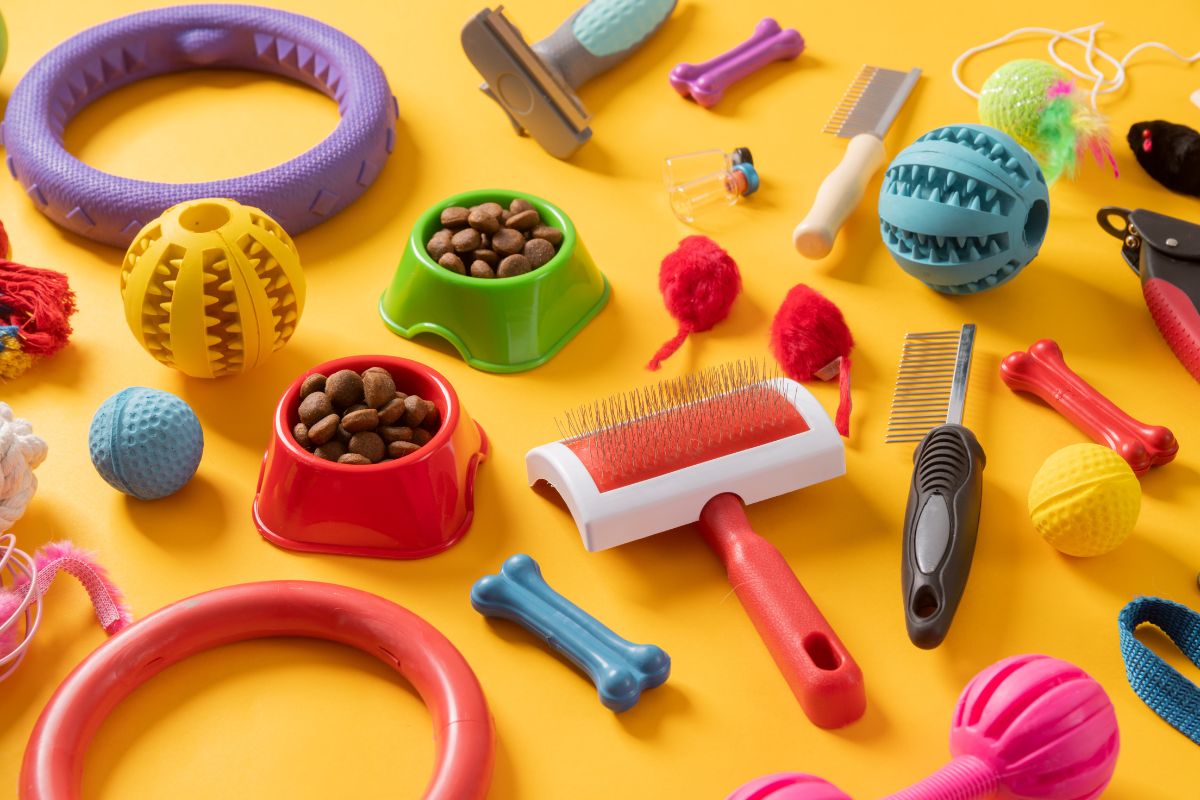
Before your puppy comes home you need to get shopping! A new puppy will require a lot of items for them to be comfortable and happy around the house.
If this is your first furry friend, then you’ll need to do a complete shop. From toys to grooming supplies, you’ll need to get absolutely everything.
If you already have dogs, the shopping list will be smaller — but there are still essentials you need to buy!
Start with the very basics. Your dog will need food and water bowls, healthy food and treats, and a place to sleep.
They’ll need an adjustable collar and dog tags, as well as a comfortable leash. And for when walks start, make sure you have poop bags.
Next, you can start to invest in toys and playthings. Consider any items you’ll need for grooming, such as a brush and dog shampoo.
Then, think about what you’ll need around the house. A pooper scooper might not be essential, but you’ll be happy to have one!
Think about the puppy you’re bringing home. Are they teething? Are they toilet trained? Are they ready to start going on walks?
A lot of your shopping list will be tailored to your exact dog, so make sure you understand their needs before you start.
It’s important to do this even if you already own dogs. Each dog is unique with their own needs. The items you bought for your older dog might not be right for your new puppy.
Ask the relevant questions to determine your new dog’s needs and shop accordingly.
If you’ve never owned a dog before, you might be feeling a little lost in the pet aisle!
There is a lot available and you can feel like a bad dog parent for not buying everything you can. However, at this point, it’s the essentials that matter most.
If you aren’t sure what to buy, speak to family or friends with dogs. They probably have experience with what to buy and what to avoid!
Create a list and work through it, ticking off items as you buy them. With the excitement of it all, you’re probably going to forget one or two things. But you can always pick up the rest when your puppy is settled in its new home.
Step Three: Step Up A Puppy Zone
Now that the home is safe and you have the essential supplies, you can start to create a puppy zone. This is an area in the home that is just for the puppy. It’s a place for them to rest, relax, and play.
Find an area in your home for the puppy’s crate. Place the crate inside a playpen, with room for them to play. Put comfortable bedding and some toys in the safe zone, so the puppy can make themselves at home.
If you want, you can also set up a feeding area in your puppy zone. For young pups, a few potty pads might also be helpful! A clearly defined potty spot is a good starting point for toilet training.
The puppy zone can help the dog feel comfortable and establish boundaries. When it comes to training, this experience in the puppy zone will be very useful! It will also teach your dog that it’s okay to be alone.
Puppies have a lot of energy and excitement, so the puppy zone also works well as a “calm” zone. When they start to seem over-enthusiastic, give them a moment to relax in the puppy zone.
By having the puppy zone set up before your furry friend comes home, they can start getting used to the space soon after moving in.
Start by introducing the puppy to the puppy zone in short bursts, before gradually increasing the amount of time they spend inside.
If you live with other people, discuss the boundaries of the puppy zone. Everyone needs to understand that the puppy zone is a safe space for the dog and not a play zone for everyone.
Your new puppy probably isn’t safe having full access to the home, especially if you can’t watch over them all the time. Baby gates can be used to block off parts of the house you don’t want the dog to access.
Some strategic baby gates will provide them with more room than the puppy zone, without putting them in danger. Plus, you’ll be able to keep an eye on what they’re up to!
Step Four: Discuss Responsibilities
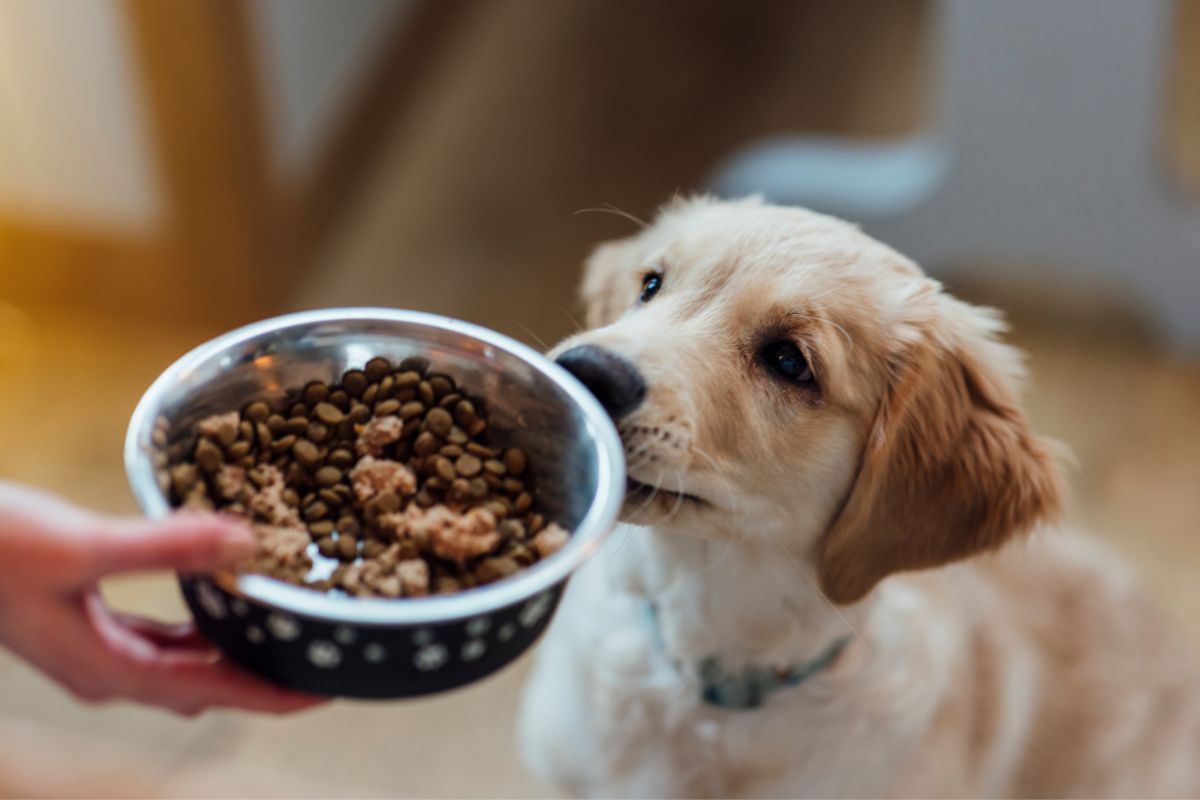
Bringing a puppy into a family or shared home? It might be an exciting experience, but has everyone considered the realities of having a new puppy in the house?
A new puppy requires a lot of adjustment. Those early weeks are going to be full of chaos and no amount of preparation is ever going to make the transition completely smooth.
While there will be plenty of excitement, everyone should prepare for a big dose of stress.
Before the puppy arrives, discuss what the schedule is going to look like over the next few weeks.
It’s best to establish a routine during these early days, but be prepared for it to change and adapt as you get to know your puppy.
Discuss what responsibilities everyone will take on when the puppy arrives. Who will be in charge of feeding? How will you divide up walks? Who’s responsible for that mess on the carpet?
It’s also good to have an honest discussion about what life with a puppy will be like!
Prepare them for some sleepless nights, lots of cleanups, and necessary hard work. But also remind them of all the fun you can expect.
And it might sound harsh, but you may need to have a stronger word with the softer-hearted members of the family!
If you’re planning on leaving the puppy alone in the puppy zone for short periods, there will be some puppy whining.
It’s very tempting to rescue them with kisses and cuddles, but it won’t be good for long-term training.
Talk about what boundaries you will have for the puppy. You might be determined that the dog will not go on the bed while your partner looks forward to snuggling up at night.
By discussing the rules now, you can treat the puppy with consistency.
It can help to write down a routine, a list of chores, and a set of rules. Keep these displayed around the house so that everyone, even younger members of the family, know how to behave.
Step Five: Find A Vet
No one wants to wait for an emergency to discover they don’t know what to do when things go wrong. Before your puppy arrives, you need to find a vet near your home who can care for your dog.
Within the first few weeks of getting your dog home, organize a visit to the vet. They’ll need a general wellness check, as well as some vaccinations.
Use this opportunity to discuss any concerns you may have.
Depending on where you purchased the dog, it might have already been checked over by a vet.
However, a vet visit is always a good idea for a new owner. You can hear from the vet directly and it’s an opportunity to develop a relationship with someone you’ll be relying on in the future.
If this is your first pet, you might not be sure where to look for a reputable vet.
The internet is always a good starting point, while friends and family might be able to offer helpful suggestions. If you still aren’t sure, try asking at a local pet store.
The first vet visit can be a nervous experience for you and the puppy. Research beforehand can help you, the owner, relax.
As for the puppy? Bring a few treats to your first vet visit to reward them for good behavior.
Now is also a good time to research professionals in the area who can help with the dog. Having the number of a puppy sitter on hand can be a lifesaver in an emergency scenario.
Although it’s hard to establish these relationships before you know the dog, you can reach out to potential sitters.
A dog walker is another helping hand worth considering, particularly if you’re getting an energetic breed.
You might not always have the time to take your dog on the walks it needs every day. A dog walker can lighten the burden, so both you and the dog are happy.
Although you might not need their services straight away, familiarizing yourself with local dog walkers and puppy sitters can pay off in the long term.
You get an idea of the kind of services they offer and whether they’re the right fit for you.
Again, a combination of word of mouth and the internet can help you find the right people.
Finally, consider booking some training with a professional dog trainer. This is particularly useful if you’ve never had a puppy before, but it can benefit any new dog owner.
They can help you establish a routine and offer you support as the puppy gets used to life in a new home.
Conclusion
It’s time to bring your new puppy home! You’ve done what you can to get everything prepared but let’s be honest, there’s probably something you’ll have to run and get at the last minute. Don’t worry, that’s just life with a puppy!
The journey from here on out is going to have some bumps in the road. However, the good times will outnumber the bad when you’re getting to know a new dog.
And by following this guideline, you should be as prepared as you can be for puppy parenthood!
The most important thing is to stay patient and enjoy the moment. Introducing a puppy to a new home might be stressful, but it’s so worth it for the joy of watching your puppy grow and explore.
Frequently Asked Questions
What Do You Do When First Brining A Puppy Home?
The first moments in a new home can be overwhelming for a new puppy. Limit them to a small area of the house and slowly introduce them to their new family.
Take them outside and show them the potty spot (with rewards for going in the right place). Keep the day as calm as possible, to minimize stress.
What Do You Need To Buy For A New Puppy?
Before bringing a new puppy home, make sure to stock up on the basics. A food bowl, water bowl, healthy food, and treats are all must-haves.
You should also invest in an adjustable collar and dog tags, as well as a leash. Pick up things to make a comfortable bed as well as some toys for the dog to play with.
- How To Teach Your Puppy Their Name Easily! - July 18, 2023
- Is Your Puppy Counter Surfing? Find Out How To Stop It! - July 18, 2023
- How To Train Your Puppy For Car Rides: Everything You Need To Know - July 18, 2023


